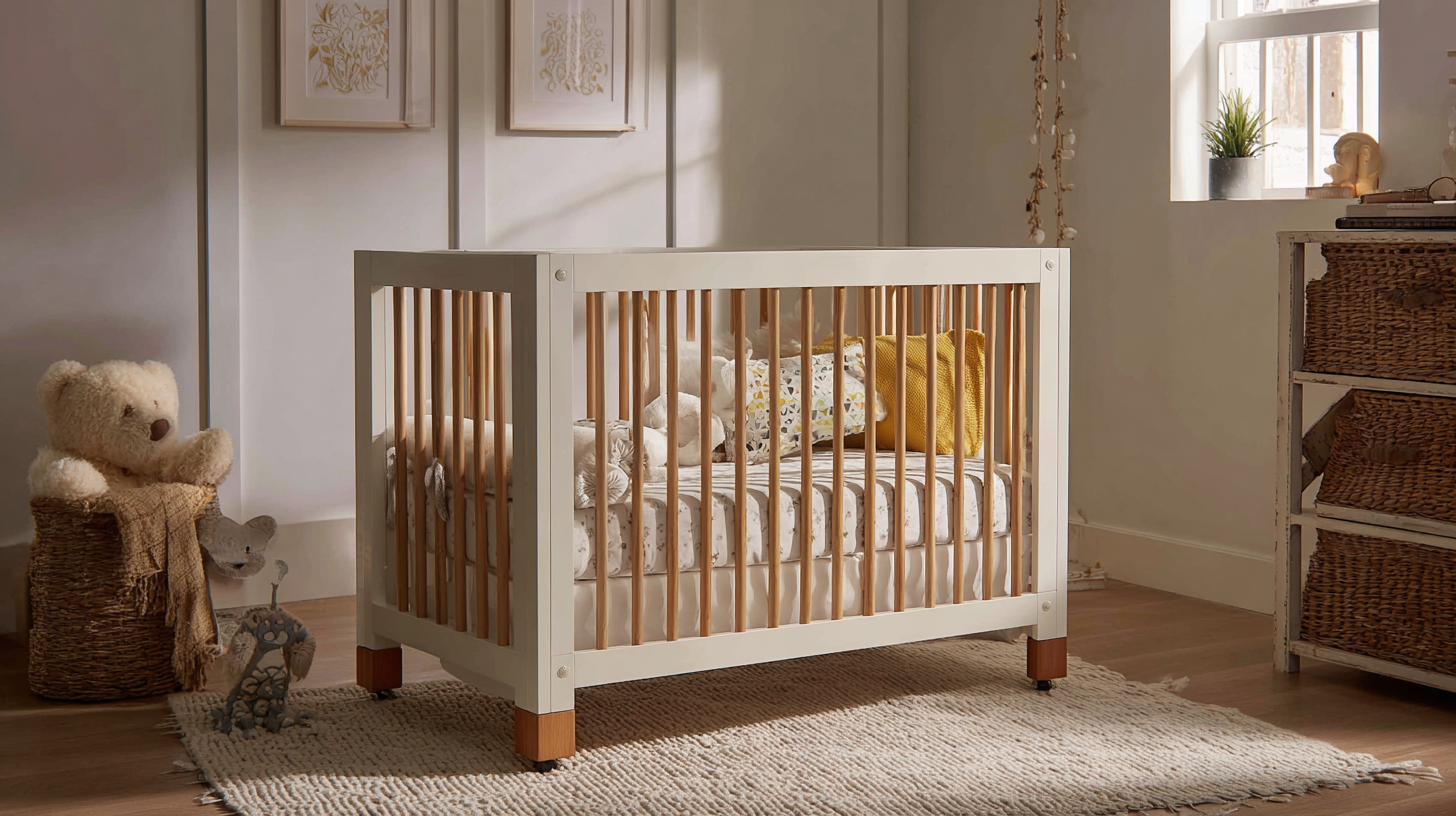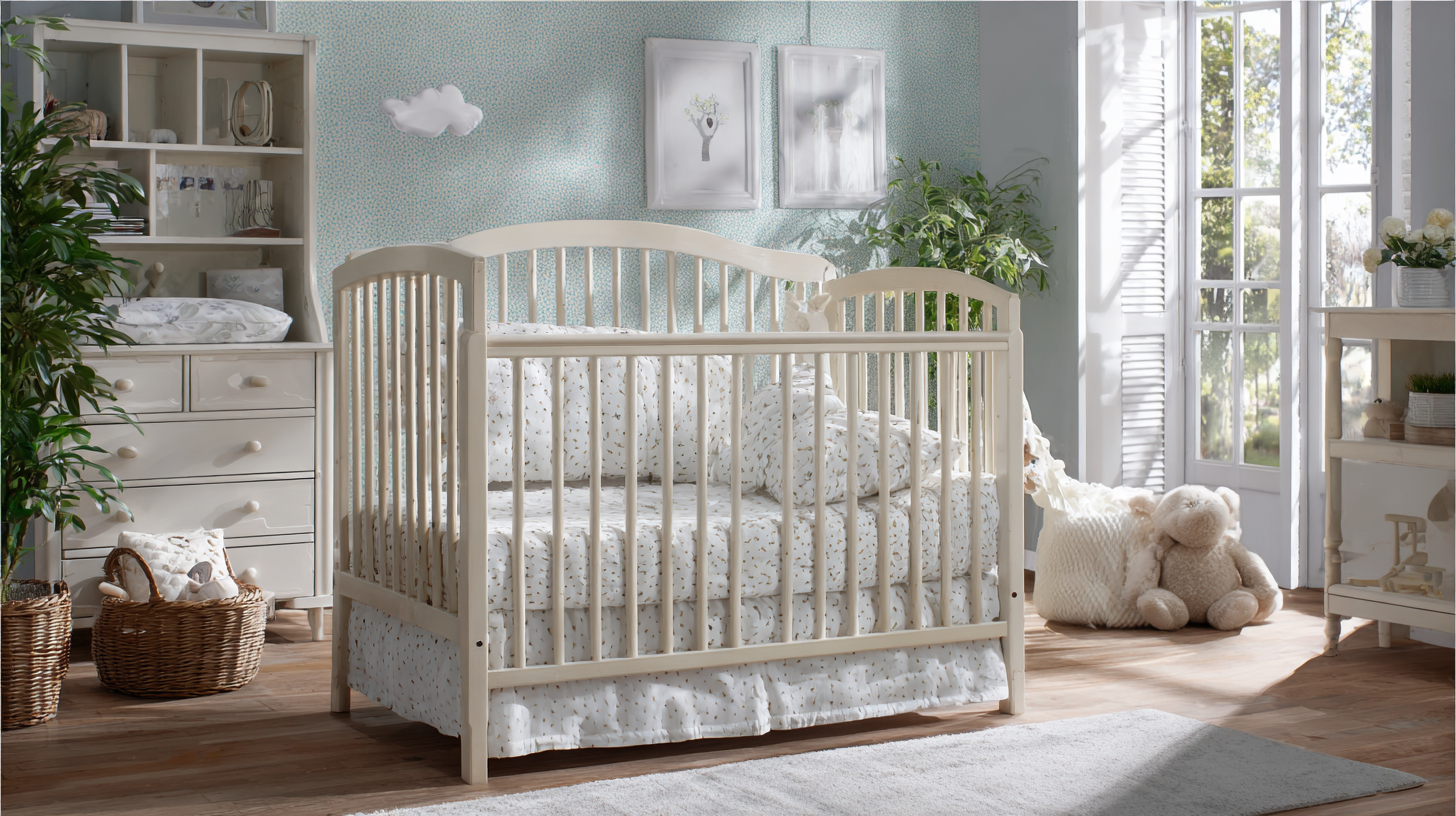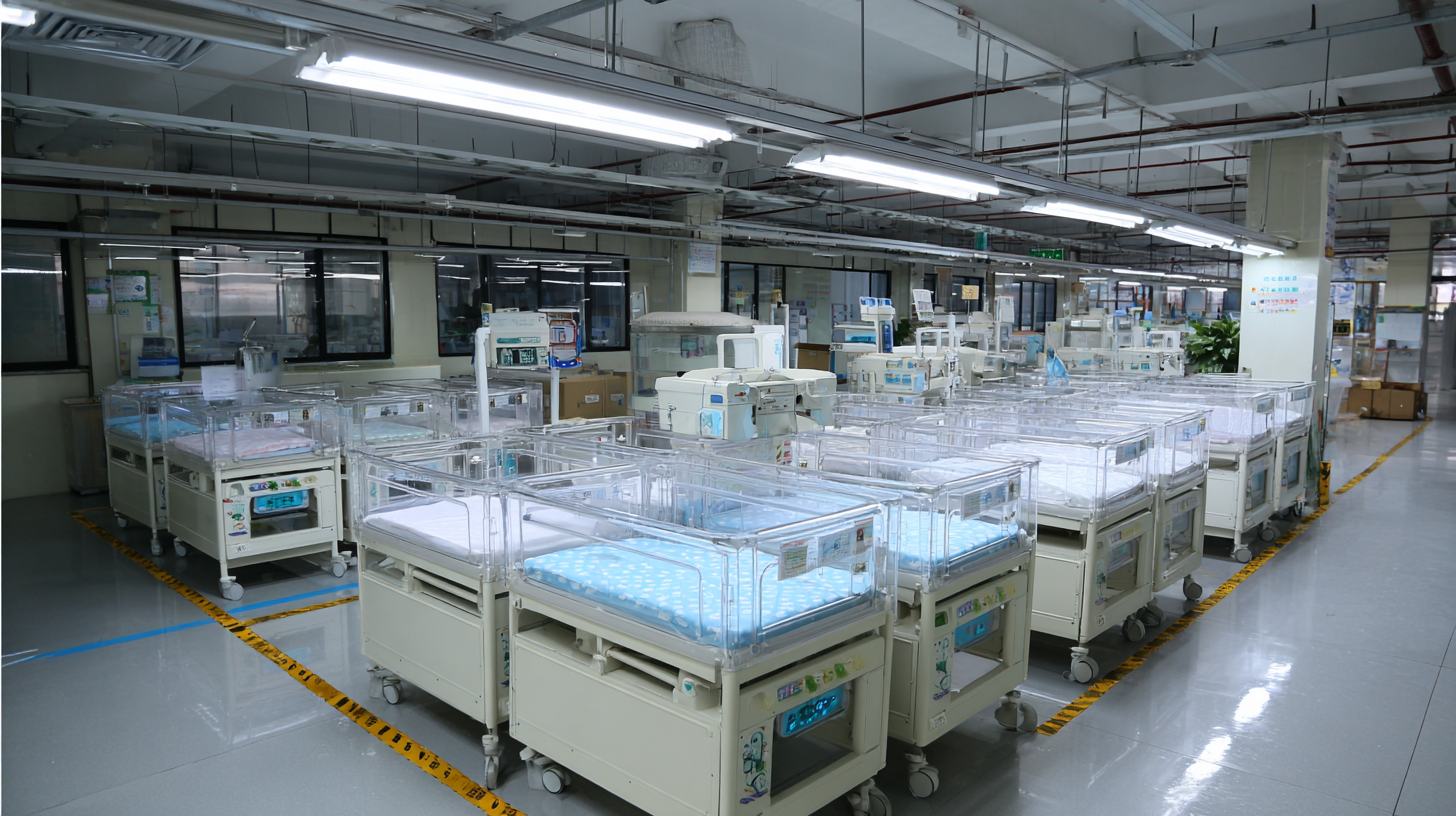In the ever-evolving landscape of baby furniture manufacturing, the global baby crib market has shown remarkable growth, projected to reach over $7 billion by 2025, according to recent industry studies. As international buyers increasingly prioritize safety, quality, and design in baby products, the demand for top-tier baby cribs is surging. Coupled with trends like sustainable materials and innovative designs, manufacturers are compelled to innovate.

Leading factories are setting new benchmarks in production, ensuring that each baby crib meets stringent safety standards while catering to the aesthetic preferences of modern parents. This blog explores the technical specifications, quantitative measurements, and top types of baby cribs available in the international market, shedding light on how these features align with global consumer demands.
In the highly competitive industry of baby crib manufacturing, understanding the significance of import and export certifications is paramount for international buyers. Certifications serve as a testament to a manufacturer's compliance with essential safety and quality standards. For cribs, these certifications often include compliance with regulations such as ASTM and CPSC in the United States, or the EN 716 standards in Europe. These regulations ensure that the materials and construction methods meet rigorous safety criteria, protecting infants from potential hazards.
Moreover, possessing the right certifications can substantially boost a manufacturer’s credibility in the global market. International buyers are increasingly demanding transparency and assurance of quality; thus, certified products are more likely to attract business partnerships. Additionally, proper certification can streamline the shipping process, reducing delays at customs and ensuring that products reach their intended destinations without extra impediments. As global trade continues to expand, prioritizing certifications becomes not just beneficial but essential for manufacturers aiming to stay relevant and competitive in the international market.
| Dimension | Value |
|---|---|
| Production Capacity (units/month) | 5,000 |
| Export Percentage (%) | 70 |
| Certifications Obtained | ISO 9001, ASTM F1169 |
| Average Lead Time (weeks) | 12 |
| Main Export Markets | North America, Europe, Asia |
| Annual Revenue from Exports (USD) | $2,000,000 |
| Number of Employees | 150 |
 Navigating international trade regulations for baby crib exporters is essential, especially as global demand rises. Recent shifts in trade policies and regulations highlight the complexities exporters face. For instance, easing import restrictions can help meet crises, akin to the baby formula shortage in the U.S., illustrating how vital it is to have adaptable trade practices. Companies must stay informed about the evolving landscapes of trade agreements and tariffs, which can significantly impact their operations.
Navigating international trade regulations for baby crib exporters is essential, especially as global demand rises. Recent shifts in trade policies and regulations highlight the complexities exporters face. For instance, easing import restrictions can help meet crises, akin to the baby formula shortage in the U.S., illustrating how vital it is to have adaptable trade practices. Companies must stay informed about the evolving landscapes of trade agreements and tariffs, which can significantly impact their operations.
Here are some tips for navigating these regulations effectively:
In the competitive landscape of baby crib production, obtaining industry certifications is vital for manufacturers seeking to establish credibility and ensure quality. According to a recent report by the International Consumer Products Safety Commission, nearly 10,000 infant injuries related to cribs occur annually in the United States alone. This statistic underscores the importance of adherence to safety standards, with certifications like the ASTM F1169 and JPMA certification being critical benchmarks for quality assurance in crib manufacturing.

To navigate the certification process effectively, manufacturers should begin by familiarizing themselves with relevant standards and testing protocols. The first step involves conducting rigorous product testing to assess compliance with safety regulations, which is a requirement in many markets. Data from the Consumer Product Safety Commission also indicates that cribs meeting these standards significantly reduce the risk of injury, making them not only safer but also more marketable.
Once testing is successfully completed, manufacturers must compile the necessary documentation to submit for certification, ensuring all labeling and packaging meet international guidelines. In a market projected to reach $1.4 billion by 2027, as shown in the latest Global Baby Products Market report, these certifications can be a distinguishing factor in attracting international buyers who prioritize safety and quality.
In the ever-evolving landscape of global crib production, ensuring quality assurance remains a paramount concern for manufacturers catering to international buyers. As highlighted in the recent reports by industry analysts, global baby product sales have surged, with the crib market alone expected to reach $15 billion by 2025. With such significant growth, it becomes critical for manufacturers to implement best practices that guarantee the safety and durability of their products.
The recent Huawei Manufacturing Global Summit 2024 underscored the importance of digital innovation and globalization in accelerating production efficiency. Factors such as automation and data analytics are reshaping quality assurance processes, enabling companies to identify potential defects early in the manufacturing cycle. According to a report from the International Association of Baby Product Manufacturers, 90% of recalls in baby products are attributed to safety issues, emphasizing the need for stringent quality control measures.
By adopting a data-driven approach, manufacturers can improve product quality while minimizing risks. Implementing standards such as ISO 9001 not only helps in maintaining quality but also enhances a company’s reputation in the competitive global market. This dual focus on digital transformation and rigorous quality assurance positions manufacturers to meet the high standards expected by international buyers and ensures a safer environment for infants worldwide.
When sourcing baby cribs from a leading global factory, international buyers must prioritize compliance with various regulatory standards to ensure safety and quality. According to the U.S. Consumer Product Safety Commission (CPSC), there are over 11,000 reported injuries related to crib use each year, highlighting the critical need for adherence to safety regulations. International buyers should familiarize themselves with both local and international standards, such as ASTM F1169, which outlines safety specifications for full-size cribs, as well as the EN 716 standard preferred in many European markets.
Working closely with manufacturers to ensure their products meet or exceed these standards is vital. Buyers should request documentation and certification that demonstrate compliance, such as testing reports from accredited laboratories. The global crib market is projected to reach $3.6 billion by 2026, according to a report by Grand View Research, indicating the demand for safe and compliant products is higher than ever. By establishing clear communication channels and utilizing comprehensive checklists that cover all regulatory aspects, buyers can avoid costly recalls and enhance their brand reputation in a competitive market.
This chart illustrates the compliance rates of various regulatory standards in the baby crib manufacturing industry. The data is based on a survey of manufacturing plants worldwide, highlighting key compliance areas that international buyers should be aware of.
TradeManager
Skype
VKontakte

